Steel casting is considered an innovative, leading-edge technology when used in the design of building structures. However, there are several notable North American buildings that used steel castings that have been in service for over a decade. As steel castings become more commonly used in building design, innovative applications of this technology are emerging.
Increasingly, structural engineers are turning to the freedom of geometry and material capabilities offered by casting manufacturing to solve tough structural challenges. This article presents three examples of this “second-order” innovation.
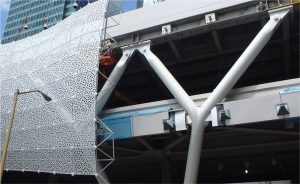
Figure 1. Cast nodes in the architecturally exposed steel frames at the Transbay Transit Center. Courtesy of Transbay Joint Powers Authority.
Designer Materials
When designers think of steel castings, they often first think of beautiful, organically-shaped connection nodes like those used in the Transbay Transit Center in San Francisco. In this type of application, castings are selected because they offer the geometric freedom that can provide performance advantages over conventionally-fabricated details. The material used for typical cast structural nodes is usually very similar to that of conventional structural steel. However, designers of some of the world’s tallest building structures are now turning that convention upside-down.
One novel casting technology for heavily loaded multi-directional connection nodes, such as those found in transfer or outrigger levels of high-rise towers and other heavy structures, provides simple geometry with complex, engineered material. Often, heavily loaded multi-directional nodes are fabricated with heavy plates laminated together, combined with complex fabrication. One challenge in using heavy steel plates in this way is that, once the plates exceed 2.5 inches in thickness, the achievable yield strength is typically less than 50 ksi. If the connected members are of a 50 ksi material and loaded close to their capacity, this strength mismatch can pose a significant challenge. Heavy plates can also exhibit centerline shrinkage which makes them susceptible to lamellar tearing when loaded normal to the plane of the plate.
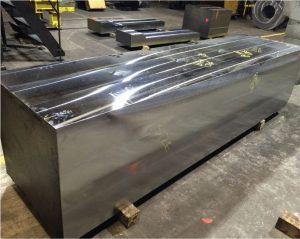
Figure 2. Machined high strength cast steel rectangular block for highly-stressed multi-directional connection nodes.
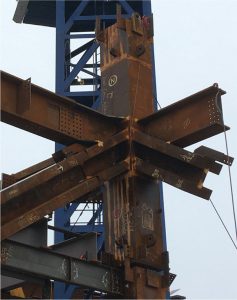
Figure 3. High strength cast steel rectangular block installed in a high-rise in New York City. Courtesy of Juan Estevez, Tishman Construction.
This new technology consists of rectangularly shaped castings manufactured with a steel grade that provides minimum yield strengths of 50 ksi through cross sections up to approximately 48 inches by 48 inches, while remaining weldable via conventional means. This can only be achieved through careful control of alloy elements in the block material, combined with an engineered hot working and heat treatment to promote grain refinement. Structural attachments can be welded to the faces of the blocks to create hybrid cast/fabricated nodes that are easily installed in the field. The solid rectangular block easily accommodates the flow of forces through the node. Thus far, the largest (by weight) rectangular block in use is a 30-inch x 32-inch x 103-inch block utilized in a new steel high-rise in New York. NY.
Form Finding Optimization
As has occurred in many other fields of practice, digital design has opened the door to exciting new geometric forms in structural engineering. The next revolution in computer-assisted design is quite possibly topology optimization. Topology optimization is the use of numerical analysis to optimize material use and form within a defined design space and for a specific set of boundary conditions. The nearly free-form geometry achievable via the casting process is well suited to design that is informed by topology optimization.
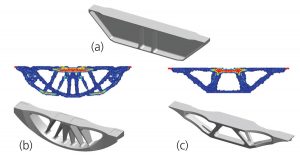
Figure 4. a) Typical wide flange beam used in a common mechanical structure; b) and c) analysis results and preliminary casting designs from topology optimizations with two unique design spaces.
One example of the optimization was used to develop a cast steel component that would replace a wide flange section used in large mechanical structures in the oil industry. This particular beam element is subjected to three-point bending, including out-of-plane loading considerations. Provided with loading and geometric constraints, this exploratory design effort was a perfect opportunity to use topology optimization to develop a preliminary geometry. The series of drawings in Figure 4 illustrates the geometry of the original part (Figure 4a) and the two optimized solutions (Figures 4b and 4c).
The original design was a stiffened wide flange section weighing 1950 pounds. The first optimization was conducted using a design space of 127 x 15 x 30 inches. The optimization included minimum thickness constraints which are determined based on the thickness limitations of the casting process. As such, the resulting design weighed 3,430 pounds and resulted in a geometric form that was awkward and inefficient. As with other iterative designs, the input parameters were adjusted to modify the converged solution. The design space was decreased to 127 x 15 x 22.5 inches to develop a second optimized solution that was more readily castable and made better use of the material. Somewhat counterintuitively, reducing the available depth enables more efficient use of cast material, because the minimum required material thickness is better utilized. As such, the resulting design attained by reducing the design space weighed 1,555-pounds, which is an approximate 20% reduction in weight compared with the current beam. The resulting geometric form was used to create a castable geometry that is currently being explored as a practical replacement for the wide flange beam in the mechanical structures studied.
Product Hacks
Another use of steel castings is to use standard connector products outside of their original intended design. One case study of a “product hack” is in the new elementary school in Grand Prairie, Alberta. The design of this school included several inclined timber columns that support an over-hanging roof and are located on the exterior of the building. Originally, the designers at Stantec desired a custom cast steel connection for the ends of the columns. However, schedule compression would not accommodate the lead time required for a custom casting, which is approximately 18 to 22 weeks. The team developed an innovative solution that would support an aggressive construction schedule while still providing the smooth geometric form that was the original driver for the desire to specify castings. Innovative detailing enabled the use of standardized cast steel connectors, intended for circular hollow sections, as timber end connectors. These standardized cast steel connectors were fitted with a knife plate that would slot into the ends of 12-inch diameter timber columns and connect using three through-bolts per end. The ends of the timber columns were tapered to match the taper of the cast connector, creating a pleasing aesthetic.
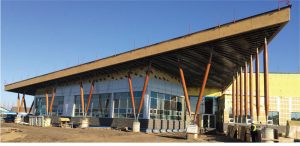
Figure 6. Sloped wood columns support an over-hanging roof in Grand Prairie, Alberta. Courtesy of Stantec.
Another potential product hack is a new application for anti-seismic, cast steel yielding connections in truss moment frames. These cast steel yielding connections dissipate seismic energy via flexural yielding of several parallel cast steel yielding fingers. Cast steel yielding connections were developed to enhance the ductility of vertical braced frames, but the connectors can be used at the end of any axially loaded member to provide fully symmetric yielding. One innovative application of this connector that is currently under exploration is their use in the seismic retrofit of deficient truss moment frames.
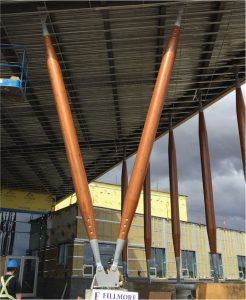
Figure 7. Standard cast steel connectors typically used in structural steel were “hacked” as timber end connectors. Courtesy of Stantec.
Ideally, truss moment frames dissipate seismic energy by yielding under vertical shear, which is achieved by axial yielding of diagonal web members and shear yielding of chord members in the central portion of the truss. Unfortunately, many older truss moment frames were not designed with ductility in mind and thus are unable to dissipate seismic energy in the desired manner. It has been proposed that one possible solution to increase ductility in such a system is to replace select web members of deficient trusses with cast steel yielding connections.
Since the depth of truss moment frames is usually much less than a typical story (AISC 341-16 limits the depth of trusses in new Special Truss Moment Frames to 6 feet or less), the diagonal web members of the truss are generally much shorter than conventional braces. The use of cast steel yielding connections in the retrofit of a deficient truss moment frame is appealing because, unlike axial yielding elements, the deformation capacity of these devices are not linked to the length of the connected member. A cast steel yielding connection can provide the ductility of a full story brace in a structural element much shorter than a typical story.

Figure 5. Cast steel yielding connectors can potentially be used to add ductility to existing seismically deficient truss moment frames.
The retrofit scheme is developed by modeling a truss with cast steel yielding connections included in critical members. The appropriate size of the connector is selected for strength. Then the calculated drifts must be checked to ensure that the connector has adequate stiffness and displacement capacity and that the expected over-strength associated with the peak connector deformation is allowable from a capacity design approach. The envisioned retrofits involve fully replacing the critical web members with new elastic member and cast steel yielding connections. This concept is under consideration from multiple building owners but has yet to be implemented.
The innovative nature of steel castings enables increasingly creative applications for this technology. Engineers are using the freedom of material and geometry achievable with steel castings as a new tool to solve increasingly unique structural challenges.▪
